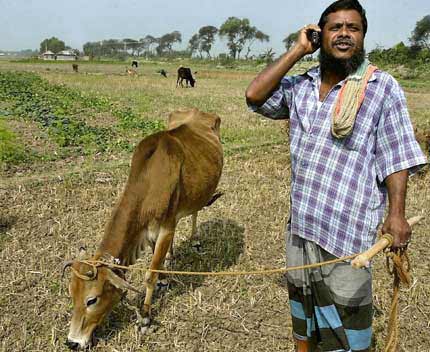Recently, Prime Minister Narendra Modi launched the Pradhan Mantri Jan Dhan Yojana
(PMJDY), one of the world’s most ambitious initiatives to promote financial
inclusion. The programme is off to a good start—within six months, nearly 125
million new bank accounts have been opened.
The Pradhan Mantri Jan Dhan Yojana programme, the
drive launched by Prime Minister Narendra Modi to ensure at least one member in
every household in the country had a bank account, could soon emerge as a
worldwide template for achieving rapid financial inclusion.
The Financial Action Task Force, a global
anti-terror financing agency, has given initial approval to a paper by India on
how it achieved the task in a few months while adhering to know your customer
(KYC) norms. The study will now be fleshed out further. The agency, which
advocates stringent KYC standards in order to stamp out terror financing, is
keen to see whether the Indian model can be emulated by other countries. The
US, Russia, Spain and the Netherlands have extended support to the paper.
 |
Since Independence, India has pursued a range of initiatives to
wean the poor away from traditional forms of moneylending and bring them into
the financial mainstream. Now, financial inclusion has become a prominent
policy priority.
The programme builds on the country’s recent successes. While
earlier efforts to expand financial inclusion may have fallen short of
policymakers’ hopes, the more recent growth of group lending models and
microfinance institutions has made it easier for the rural poor to save and
take loans. Moreover, business correspondent models have helped expand the
reach of financial access points, microfinance institutions have been brought
under a self-regulatory mechanism, the national payments system has been
developed and strengthened, and the Unique Identification Number (Aadhaar)
initiative has been rapidly scaled-up, signing on new customers and
authenticating them to make transactions more efficient. The recent
establishment of small banks and payment banks is also a clear step forward.
Nonetheless, significant potential exists to further leverage
technology to boost financial inclusion.
Already, direct cash transfers into beneficiaries’ Aadhaar-linked
bank accounts are starting to plug leaks and promoting the cost-effectiveness of
social benefit schemes.
THE WAY FORWARD !!!
- Expanding the use of Aadhaar
to banks, insurers, post offices,
non-banking financial companies, microfinance institutions, cooperatives
and mutual funds can boost these efforts considerably.
- The rich dataset of transactions that
such expansion will yield can help develop new financial products
for households and small businesses. For example, data
on individual patterns of saving or timely repayment records in a credit
bureau can substitute the requirement for collateral assets or guarantees,
making it easier for institutions to offer loans, insurance or
micro-investment products to underserved segments of society. Traditional
channels such as cooperative banks, post offices and rural financial
institutions too can play a greater role.
- India can also take advantage of the developments in mobile telephony. With more than 870 million active mobile subscribers, India can expand financial inclusion by promoting mobile financial services. For instance, mobile money can help eliminate ad hoc means of transferring money that are expensive, unreliable and prone to theft. It can complement the 425 million debit and credit cards currently in use in India and target the 150 million RuPay cards linked to PMJDY accounts, of which 110 million have already been issued. For these models to work, however, they must ensure commercial viability for the banks, banking correspondents and others providing needed services.
 |
- Ensuring women’s
access to resources is equally critical. Although
microfinance has successfully linked many women to mainstream financial
services, most women-owned micro, small and medium enterprises (MSMEs)
continue to remain underserved by formal institutions—only about 3%
of the country’s 3 million such enterprises have formal financial access.
 |
- A robust system is also needed to ensure consumer protection and build depositors’ trust in and understanding of the system. While efforts are on to continue to expand financial services, the suitability of the products on offer and the financial capability of clients are also being emphasized, helping create confidence among new customers that their money is safe.
- Globally, the goal is to
achieve financial access for all by 2020. World Bank Group
president Jim Yong Kim and Queen Máxima of the Netherlands—the
UN secretary-general’s special advocate for inclusive finance for
development—have urged countries to make a concerted effort in this
regard.
 |
- The success of PMJDY can indeed be a model for other countries. India is already providing leadership and spurring innovations. Recently at the World Bank’s headquarters in Washington DC, Reserve Bank of India governor Raghuram Rajan and State Bank of India chairperson Arundhati Bhattacharya shared their insights on India’s successes, the priorities that lie ahead and the challenges that remain.
- On its part, India too can
benefit from the wealth of experience garnered by other countries in
promoting financial inclusion. Being home to one-third of the world’s poor
living on less than $1.25 a day, India’s success will be key if we are to
achieve universal financial access by 2020.

